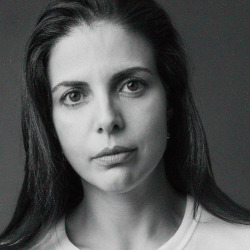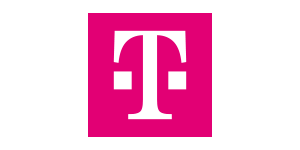Kyriaki Goni is an Athens born and based artist. She works across media creating expanded, multi-layered installations. She connects the ‘local’ with the ‘global’ by critically touching upon questions of datafication, surveillance, distributed networks and infrastructures, ecosystems, human and other-than-human relations. Her artistic practice incorporates research and, in this framework, she interacts with scholars and scientists from various disciplines.

She presents work internationally in solo (Aksioma, Drugo More, Onassis Foundation) and group exhibitions (13th Shanghai Biennale, Modern Love, 5th Istanbul Design Biennale, Transmediale, 13,700,000 km^, The Glass Room etc). She is a Delfina Foundation alumna (2019) and a Niarchos Artworks fellow (2018). Her latest work Data Garden (Onassis Stegi, Ars Electronica) received the state prize INSPIRE2020 from the MOMus Experimental Center of the Arts in Greece.Her artistic research gets published (Leonardo MIT; 49:4, Neural #65 etc.), while Goni frequently designs and implements workshops as part of her practice. With prior graduate studies in Fine Arts, Goni also holds an MA in Digital Arts (Athens School of Fine Arts) along with a BA and an MSc in Cultural Anthropology and Development Sociology (Panteion University Athens & Leiden University, NL).
“Throughout my work I investigate the interaction of technology and society, collaborating frequently with scholars and researchers from various disciplines. Among others, I have been focusing on the possible synergies between human and machine. Two previous works of mine Eternal U (2016) and Counting Craters on the Moon (2019) examine this possibility from different angles. Algorithms are omnipresent in our lives. Many parameters have to be taken into account, fairness of data, biases, digital personhood, AI research in Europe vs in the USA or in Asia, knowledge and perception, but also resources and climate crisis.”
“The ways that human beings and machines can be complementing, not replacing or threatening with each other, is enormously important for our future. Art, by all means, can be a way to approach and playfully question possibilities, creating at the same time bridges between broader audiences and science. The encounters and collaborations between artists and scientists offer a promising and fruitful framework for such an interesting and important subject as the human- machine interaction. Therefore, I am delighted to be part of the ArtScience Residency Program enabled by Deutsche Telekom and I am eager to exchange ideas and views with scientists and audience alike.”

Antje Hundhausen, Vice President Brand Experience, Deutsche Telekom:
We are very excited that our three years ArtScience Residency starts with Greek artist Kyriaki Goni. Her artistic work focuses on the intersection between technology and society and more specifically the relations between the human being and the machine. Together with the Ars Electronica and the Linz Institute of Technology of Johannes Kepler University, I am confident, that we will provide the artist with experiences and knowledge as well as new inspirations to further research on the topic. It seems even more acute now, as during the the lockdown periods due to COVID-19, we have all witnessed and learned more about the impact and importance digitalization has: not only for our work, but especially to prevent social isolation.

Martin Honzik, Ars Electronica:
Through this wonderful program, Art Collection Deutsche Telekom and Ars Electronica have harnessed a common ground: researching social phenomena with art. Deutsche Telekom’s thematic orientation opens up a geographic framework in Eastern Europe, and Ars Electronica’s expertise provides the focus for ArtScience Research. By means of an open call, we specifically asked young and aspiring artists from Eastern Europe to share their vision of this convergence with us. In addition, existing contacts from the network of both partners have been instrumental in nominating artists. The fantastic submissions that resulted made the jury’s decision as difficult and complex as possible in the best sense of the word. We received around 120 submissions from 22 countries. They gave us a glimpse into their world of thought, their critical approaches, their qualitative knowledge, their skills and their collaborative cosmopolitanism. They are a new, young, critical and up-and-coming generation of creatives and by moving forward they manage not only to redefine art a bit, but also to reposition it a bit in society. Not only the fantastic winning project by Kyriaki Goni from Greece, but also the generally high level of the artistic submissions, all of which came from young and mostly female entrants, was a positive confirmation that the basic question of the project was correct and important, and furthermore shows that the cultural area of Europe reaches and has an effect far beyond the politically drawn borders. We are all looking forward to showing Kyriaki Goni’s final project at the next festival.

Kerstin Pell, Johannes Kepler University Linz:
Science and art are used to navigating through unknown terrain, do not shy away from complex problems, and are the source and impetus of innovation in our society through the exploration and creation of radically new things. At the same time, they differ in their approaches, solution strategies and methods. In confronting future challenges, we therefore need not only more science and art, but above all their cross-fertilization and synergy. Kyriaki Goni opens up this space for interaction and dialogue in her works. In doing so, she places the human being at the center of technological developments and confronts her audience with current issues in a very expressive way. In connection with the main research areas of Johannes Kepler University, Responsible Technologies and Digital Transformation, exciting overlaps can be found here, which can be deepened in the context of the residency.

